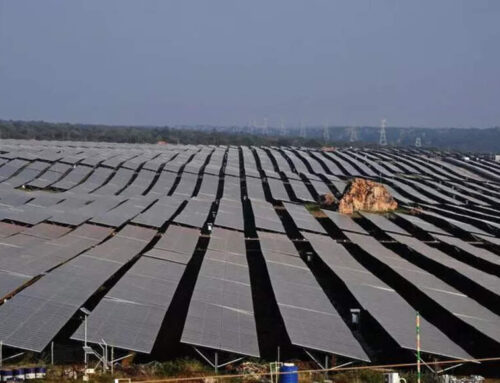No rooftops full of panels or expensive installations – this retiree’s invention for cheap energy in a shoebox
March 30, 2025
Plastic waste and the challenge of getting rid of it have become major global issues. On top of that, there’s the ongoing need for more renewable and clean energy, both for industries and households. These two problems need quick solutions, and many research projects are working hard to tackle both at once, some even with a single invention.
The need for a solution to plastic waste and clean energy
In the past two decades, the world’s annual plastic waste production has skyrocketed, doubling from 180 million tons to over 350 million tons, according to the OECD’s World Plastics Outlook report.
Dan Caris introduced the first fully functioning prototype of his groundbreaking device to an eager crowd of local supporters in Merced, California on March 17. This invention promises to provide emission-free electricity for industries, homes, and electric vehicles, all while tackling one of the planet’s most persistent problems: plastic waste.
Introducing the CarisMatic Generator
Caris Inc. has now secured the final patents for several of the innovative features exclusive to the CarisMatic Generator, a machine that turns plastic waste into an unlimited supply of clean, emission-free electricity.
CEO Dan Caris shared, “The generator consists of eight to ten distinct systems. With the patents secured, we’re finally able to show off how it all comes together.”The exclusive presentation took place at the residence of Julie Garber in Merced, who serves as Caris Inc.’s Director of Investment Stewardship.
The machine, dubbed an “electrochemical, thermal, and mechanical system,” works by turning plastic into a cloud of finely ground material, which is then heated to thousands of degrees in a ceramic chamber. This cloud is sent to a heat-exchange unit, where it generates steam to power a turbine, producing electricity in the process.
At the same time, the super-heated plastic is broken down to a molecular level and chemically interacts with a converter, much like the system in a car’s exhaust, which helps to cut down on most of the harmful emissions. Talk about cleaning up your act—both literally and environmentally!
Caris Inc. VP Susan Savage delivered the PowerPoint presentation to about 50 attendees during the late afternoon event, where she walked them through the standout features of the CarisMatic Generator. “The only thing this machine runs on is plastic waste, making it unlike any other power system out there,” she said. She added, “It can handle all types and quantities of plastic, whether it’s dirty or clean.”
The plastic is ground into a fine powder and mixed into a special pellet formula. A separate branch of the company, Caris Fuel, is responsible for producing the patented plastic blend. Ms. Savage then pointed to the Pacific Gyre, the world’s largest plastic waste hotspot—basically a floating island of pollution in the Pacific. It’s estimated to be twice the size of Texas and even stretches down close to the ocean floor.
“Efforts have been made,” Caris explains, “to clean up the Gyre, but all that’s really been salvaged just ends up in landfills, where it eventually finds its way back to the sea.”
The Plastic Waste Crisis and Its Global Impact
Caris also shared figures from the National Geographic Society, revealing that 18 billion tons of various plastics are dumped into the world’s oceans each year.
It’s clear that plastic waste and its disposal have become one of the biggest environmental headaches. Since plastic doesn’t decompose easily, it’s found its way into every ecosystem on the planet. And let’s not forget—it can’t even be burned safely, thanks to the toxic fumes it releases.
Caris Inc. has launched a new division, the non-profit Caris Cares, with the goal of collecting plastic waste from non-profits and environmental groups that are already gathering it. Caris Cares will sell the waste to its parent company and use the profits to fund the distribution of CarisMatic Generators to areas dealing with power outages, support low-income housing, and provide affordable energy to underserved regions in the developing world.
The CarisMatic Generator is designed to be about the size of a household refrigerator and priced similarly to a standard home HVAC system. Ms. Savage explained, “It will be built in a way that allows it to be stacked onto similar units, making it ideal for larger industrial setups.”
There’s also a plan for a compact unit, roughly the size of a shoebox, designed to power electric vehicles. This would do away with the need for pricey batteries and, as an added bonus, help cut down on the pollution caused by mining the rare-earth materials typically used in those batteries.
Search
RECENT PRESS RELEASES
Related Post




